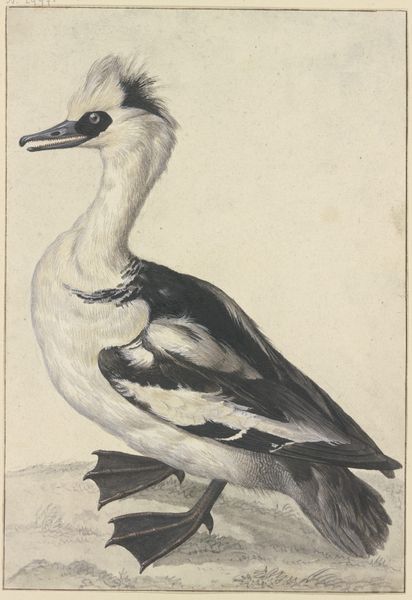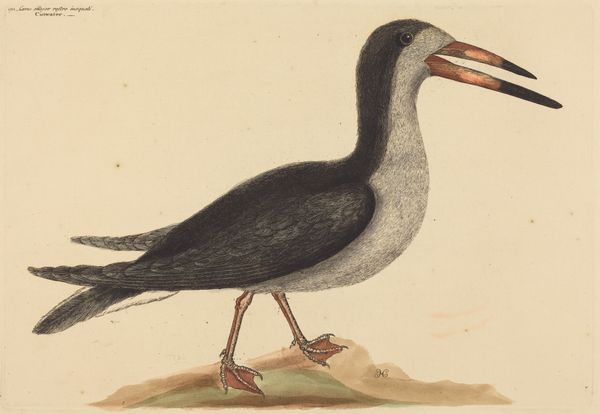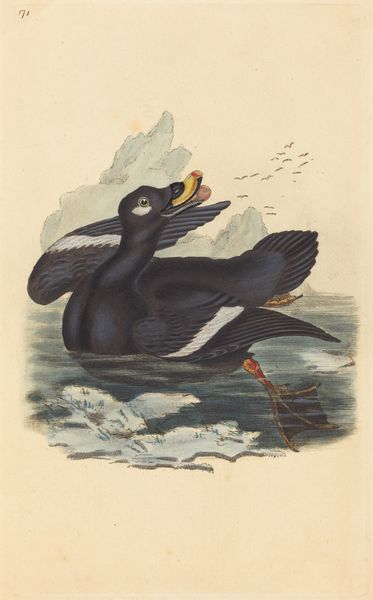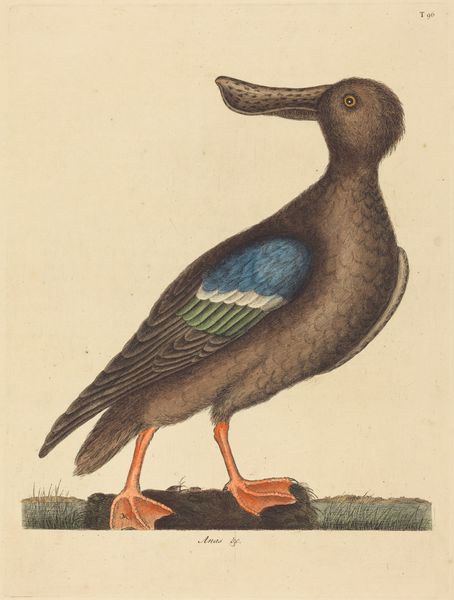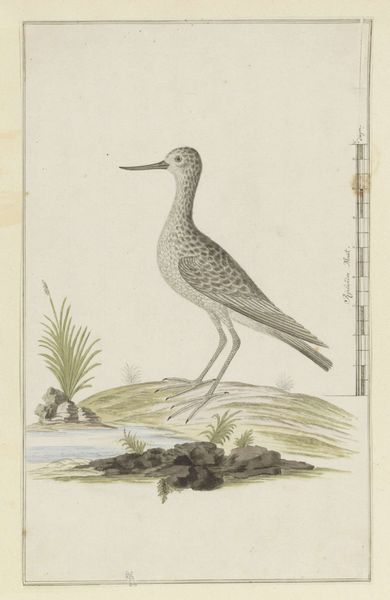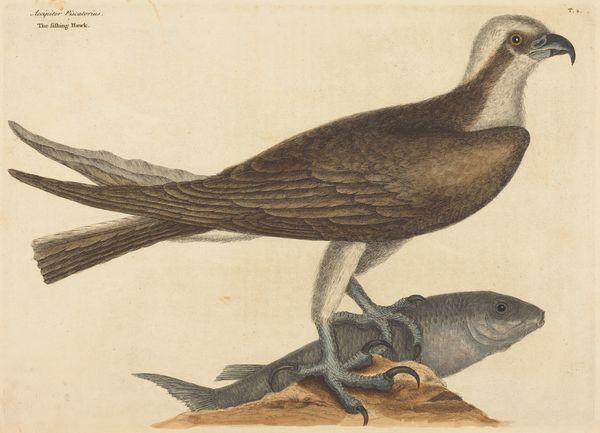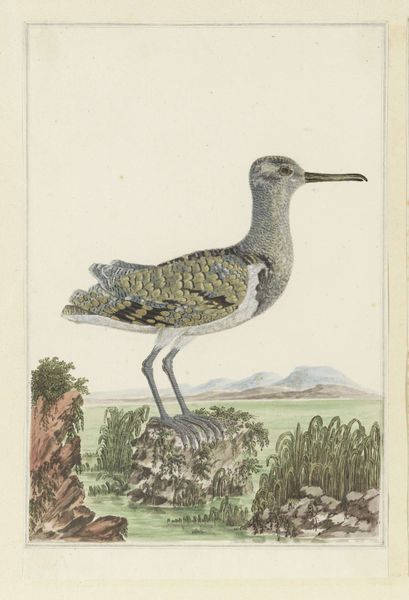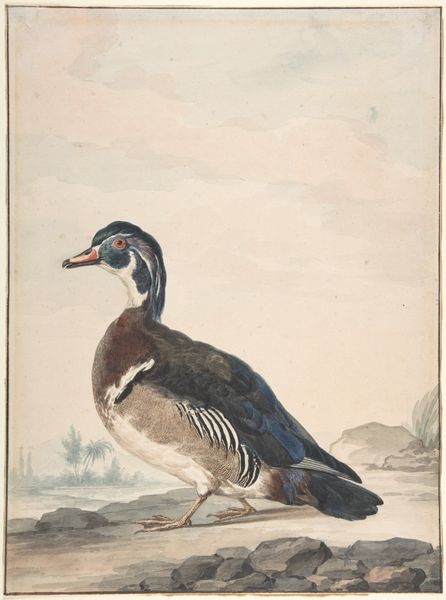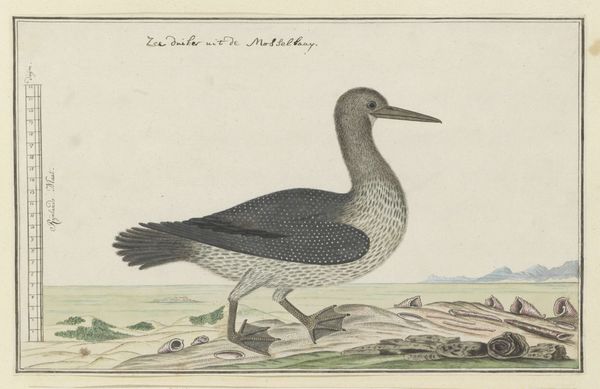
Copyright: National Gallery of Art: CC0 1.0
George Edwards’s "The Guillemot and the Puffin of the Isle of Man" is made with colored pencil and ink. The work reflects a time when the natural world was observed with the precision of scientific inquiry, even if the means of representation were necessarily handmade. Look closely, and you see how the artist renders each feather and beak with diligent strokes, building up the image through careful layering. The inks give the illustration clarity, while colored pencils soften the features of the birds and their habitat. In many ways, this image is closer to craft than to high art. It reflects patient labor and close observation, tied to the practice of natural history illustration. While Edwards may have sought to capture the objective truth of these species, the image also reflects the social context of his time. It represents the growing interest in science and natural history that was becoming an interest for many in the British Empire. We can see how this artwork documents the world, but also how it was viewed through a specific cultural lens. It reminds us of the value of craft, observation, and the human hand in understanding and interpreting our world.
Comments
No comments
Be the first to comment and join the conversation on the ultimate creative platform.
